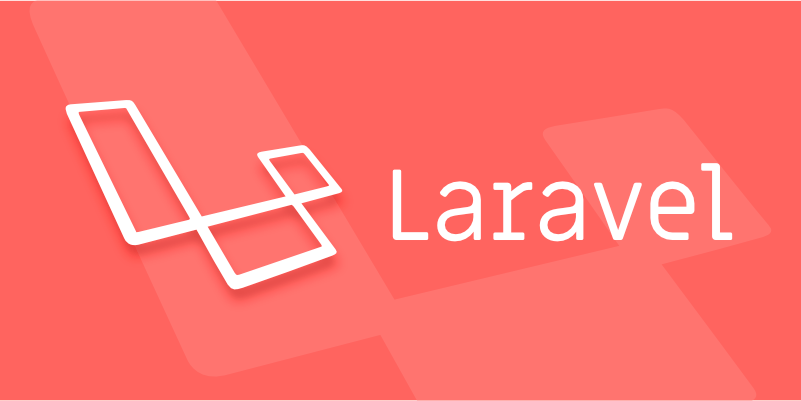The key points of debugging Laravel applications include: 1. Turn on debug mode, set APP_DEBUG=true through the .env file to display detailed error information; 2. Use Log::info() and dd() to view variable content; 3. Check storage/logs/laravel.log log files to track exceptions and queries; 4. Enable DB::enableQueryLog() to check SQL query performance problems; 5. Install the Laravel Debugbar plug-in to improve debugging efficiency. These methods can help quickly locate and solve problems in development.

Debugging a Laravel application is actually not difficult. As long as you master a few key points, most problems can be quickly located and solved. Laravel comes with a lot of tools, which can basically cover most of the problems encountered in daily development with some common methods.

Turn on debug mode
First, confirm whether your application has enabled debug mode. This setting is in the .env file, APP_DEBUG=true is enabled. After opening, the page will display detailed error information, such as error file, line number, stack trace, etc., which is very helpful for troubleshooting problems.
But it should be noted that the debugging mode must be turned off in the online environment , otherwise it will not only expose sensitive information, but may also bring security risks.

Use Log and dd()
Sometimes the error will not be displayed directly, or you want to see the content of a certain variable, you can use Log::info() or dd() at this time.
-
Log::info($variable)will record the variable content intostorage/logs/laravel.logfile, which is suitable for viewing the status of the variables in the process. -
dd()is the abbreviation of "dump and die". It will print out variables and terminate the program's running, which is suitable for quickly viewing the current data structure.
Small suggestions: If you are debugging in the API interface, you can use
return response()->json($data)to output data, which is more intuitive.
View log files
Laravel's logging system is very practical, especially when your code does not report an error but the result is wrong. The default log file is in storage/logs/laravel.log , which will record exceptions, SQL queries, custom log output and other information during the request process.
You can use the command line to view log updates in real time:
tail -f storage/logs/laravel.log
If you use Monolog or other log extensions, you can also configure log output at different levels (such as error, warning, debug) to facilitate classification processing.
Check database query
Many times performance problems or logic errors come from database operations. Laravel provides query logging function to view the actual SQL execution:
DB::enableQueryLog(); // Perform some query operations $users = User::all(); \Log::info(DB::getQueryLog());
This code will record all executed query statements and binding parameters to help you analyze whether there are N 1 queries, slow queries and other problems.
In addition, it is recommended to use the Laravel Debugbar plug-in to directly see all SQL, view loading time, routing information, etc. of the current page in the browser, and the debugging efficiency is significantly improved.
Basically these commonly used methods. Debugging is not complicated, but it is easy to ignore details, such as cache imperfection, environment configuration errors, dependency version conflicts, etc. When you encounter problems, take it step by step, first look at the log, then check the process, and finally analyze the data. Most of the situations can be solved.
The above is the detailed content of How to debug a Laravel application?. For more information, please follow other related articles on the PHP Chinese website!

Hot AI Tools

Undress AI Tool
Undress images for free

Undresser.AI Undress
AI-powered app for creating realistic nude photos

AI Clothes Remover
Online AI tool for removing clothes from photos.

Clothoff.io
AI clothes remover

Video Face Swap
Swap faces in any video effortlessly with our completely free AI face swap tool!

Hot Article

Hot Tools

Notepad++7.3.1
Easy-to-use and free code editor

SublimeText3 Chinese version
Chinese version, very easy to use

Zend Studio 13.0.1
Powerful PHP integrated development environment

Dreamweaver CS6
Visual web development tools

SublimeText3 Mac version
God-level code editing software (SublimeText3)
 Working with pivot tables in Laravel Many-to-Many relationships
Jul 07, 2025 am 01:06 AM
Working with pivot tables in Laravel Many-to-Many relationships
Jul 07, 2025 am 01:06 AM
ToworkeffectivelywithpivottablesinLaravel,firstaccesspivotdatausingwithPivot()orwithTimestamps(),thenupdateentrieswithupdateExistingPivot(),managerelationshipsviadetach()andsync(),andusecustompivotmodelswhenneeded.1.UsewithPivot()toincludespecificcol
 Sending different types of notifications with Laravel
Jul 06, 2025 am 12:52 AM
Sending different types of notifications with Laravel
Jul 06, 2025 am 12:52 AM
Laravelprovidesacleanandflexiblewaytosendnotificationsviamultiplechannelslikeemail,SMS,in-appalerts,andpushnotifications.Youdefinenotificationchannelsinthevia()methodofanotificationclass,andimplementspecificmethodsliketoMail(),toDatabase(),ortoVonage
 Understanding Dependency Injection in Laravel?
Jul 05, 2025 am 02:01 AM
Understanding Dependency Injection in Laravel?
Jul 05, 2025 am 02:01 AM
Dependency injection automatically handles class dependencies through service containers in Laravel without manual new objects. Its core is constructor injection and method injection, such as automatically passing in the Request instance in the controller. Laravel parses dependencies through type prompts and recursively creates the required objects. The binding interface and implementation can be used by the service provider to use the bind method, or singleton to bind a singleton. When using it, you need to ensure type prompts, avoid constructor complications, use context bindings with caution, and understand automatic parsing rules. Mastering these can improve code flexibility and maintenance.
 Strategies for optimizing Laravel application performance
Jul 09, 2025 am 03:00 AM
Strategies for optimizing Laravel application performance
Jul 09, 2025 am 03:00 AM
Laravel performance optimization can improve application efficiency through four core directions. 1. Use the cache mechanism to reduce duplicate queries, store infrequently changing data through Cache::remember() and other methods to reduce database access frequency; 2. Optimize database from the model to query statements, avoid N 1 queries, specifying field queries, adding indexes, paging processing and reading and writing separation, and reduce bottlenecks; 3. Use time-consuming operations such as email sending and file exporting to queue asynchronous processing, use Supervisor to manage workers and set up retry mechanisms; 4. Use middleware and service providers reasonably to avoid complex logic and unnecessary initialization code, and delay loading of services to improve startup efficiency.
 Managing database state for testing in Laravel
Jul 13, 2025 am 03:08 AM
Managing database state for testing in Laravel
Jul 13, 2025 am 03:08 AM
Methods to manage database state in Laravel tests include using RefreshDatabase, selective seeding of data, careful use of transactions, and manual cleaning if necessary. 1. Use RefreshDatabasetrait to automatically migrate the database structure to ensure that each test is based on a clean database; 2. Use specific seeds to fill the necessary data and generate dynamic data in combination with the model factory; 3. Use DatabaseTransactionstrait to roll back the test changes, but pay attention to its limitations; 4. Manually truncate the table or reseed the database when it cannot be automatically cleaned. These methods are flexibly selected according to the type of test and environment to ensure the reliability and efficiency of the test.
 Choosing between Laravel Sanctum and Passport for API authentication
Jul 14, 2025 am 02:35 AM
Choosing between Laravel Sanctum and Passport for API authentication
Jul 14, 2025 am 02:35 AM
LaravelSanctum is suitable for simple, lightweight API certifications such as SPA or mobile applications, while Passport is suitable for scenarios where full OAuth2 functionality is required. 1. Sanctum provides token-based authentication, suitable for first-party clients; 2. Passport supports complex processes such as authorization codes and client credentials, suitable for third-party developers to access; 3. Sanctum installation and configuration are simpler and maintenance costs are low; 4. Passport functions are comprehensive but configuration is complex, suitable for platforms that require fine permission control. When selecting, you should determine whether the OAuth2 feature is required based on the project requirements.
 Implementing Database Transactions in Laravel?
Jul 08, 2025 am 01:02 AM
Implementing Database Transactions in Laravel?
Jul 08, 2025 am 01:02 AM
Laravel simplifies database transaction processing with built-in support. 1. Use the DB::transaction() method to automatically commit or rollback operations to ensure data integrity; 2. Support nested transactions and implement them through savepoints, but it is usually recommended to use a single transaction wrapper to avoid complexity; 3. Provide manual control methods such as beginTransaction(), commit() and rollBack(), suitable for scenarios that require more flexible processing; 4. Best practices include keeping transactions short, only using them when necessary, testing failures, and recording rollback information. Rationally choosing transaction management methods can help improve application reliability and performance.
 Handling HTTP Requests and Responses in Laravel.
Jul 16, 2025 am 03:21 AM
Handling HTTP Requests and Responses in Laravel.
Jul 16, 2025 am 03:21 AM
The core of handling HTTP requests and responses in Laravel is to master the acquisition of request data, response return and file upload. 1. When receiving request data, you can inject the Request instance through type prompts and use input() or magic methods to obtain fields, and combine validate() or form request classes for verification; 2. Return response supports strings, views, JSON, responses with status codes and headers and redirect operations; 3. When processing file uploads, you need to use the file() method and store() to store files. Before uploading, you should verify the file type and size, and the storage path can be saved to the database.







